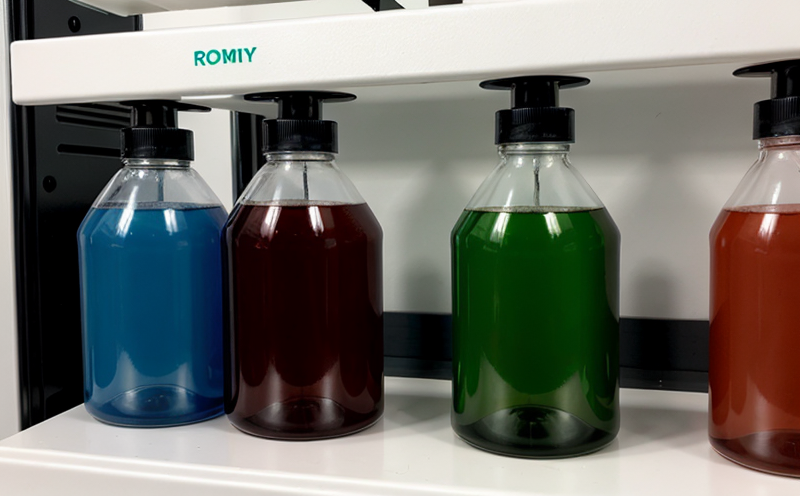ASTM D3895 Oxidative Reactivity Testing of Polyethylene
The ASTM D3895 standard provides a method to assess the oxidative reactivity of polyethylene (PE) by determining the heat release rate during an oxidative induction period. This test is crucial for ensuring that PE materials are stable and will perform reliably under real-world conditions, particularly in environments where thermal stability is paramount.
The process involves subjecting a sample to controlled heating while monitoring the temperature rise caused by exothermic reactions. The primary goal is to identify the oxidative induction period (OIP), which indicates when the polymer begins to degrade due to oxygen exposure. This information is essential for quality control and ensures that PE materials meet specific performance standards.
The test procedure requires precise sample preparation, including ensuring uniformity in size and shape. Once prepared, samples are subjected to a controlled heating profile where temperature increases gradually over time. A thermopile or similar device measures the heat release rate during this process. The results provide valuable data on the oxidative stability of the polymer, which is critical for applications ranging from medical devices to automotive components.
The ASTM D3895 method is widely used in industries such as plastics manufacturing and chemical processing where material integrity and longevity are key considerations. By adhering to this standard, manufacturers can ensure their products meet regulatory requirements and perform optimally over extended periods.
Understanding the oxidative reactivity of polyethylene through ASTM D3895 testing allows for better control of production processes and formulation adjustments. This knowledge helps in optimizing formulations to enhance product performance and durability. Moreover, it supports efforts to develop more sustainable materials by identifying those with superior thermal stability properties.
The test results can also be used to compare different grades or batches of polyethylene, aiding in quality assurance and decision-making for procurement processes. By leveraging the insights gained from ASTM D3895 testing, companies can enhance their product offerings while maintaining high standards of quality and reliability.
Given the importance of this test in ensuring long-term performance and compliance with industry standards, it is essential for manufacturers to have access to reliable laboratories capable of performing these tests accurately. Our laboratory adheres strictly to ASTM D3895 guidelines, providing accurate and consistent results that are trusted by leading companies worldwide.
For those interested in learning more about how ASTM D3895 testing can benefit their operations, we offer comprehensive services including sample preparation advice, interpretation of test results, and recommendations for material improvements based on the findings. Our team is dedicated to helping clients achieve superior product performance through rigorous quality control measures.
Industry Applications
The ASTM D3895 testing method finds extensive application across various sectors where polyethylene’s stability under oxidative stress is crucial. In the medical industry, for instance, ensuring the integrity of implants made from highly oxidized PE ensures patient safety and efficacy over extended usage periods.
- Medical devices: Implants requiring long-term compatibility with bodily fluids benefit greatly from accurate assessment of their oxidative stability.
- Aerospace: Polyethylene used in aircraft parts must withstand harsh environmental conditions without degradation, making this test vital for quality assurance.
- Petrochemicals: In refining and petrochemical processing, PE components need to endure intense heat and chemical exposure; ASTM D3895 helps ensure these materials meet stringent requirements.
- Automotive: The durability of automotive parts exposed to extreme temperatures during operation is enhanced through this testing method.
In each of these sectors, the ability to predict and manage oxidative degradation is critical for maintaining product reliability and safety. By incorporating ASTM D3895 into their quality assurance protocols, manufacturers can ensure their products meet or exceed industry standards while reducing potential risks associated with material failure.
Quality and Reliability Assurance
The ASTM D3895 test plays a pivotal role in quality control programs by providing critical data on the oxidative stability of polyethylene. Accurate measurement of heat release during controlled heating helps manufacturers identify potential issues early, allowing for timely corrective actions.
- Early detection of material instability: By identifying the oxidative induction period (OIP), this test enables early intervention to prevent degradation before it becomes significant.
- Prediction of long-term performance: Understanding the rate at which heat is released during oxidation allows engineers to predict how a polymer will perform over its expected lifespan.
- Consistency in product quality: Repeated testing ensures that each batch meets specified criteria, thereby maintaining consistent performance across all manufactured items.
The results from ASTM D3895 are used not only for internal decision-making but also as part of regulatory compliance efforts. This standard helps ensure products meet international standards like ISO and ASTM, further enhancing customer confidence in the quality and reliability of purchased goods.
Our laboratory ensures that every test conducted adheres strictly to ASTM D3895 guidelines, guaranteeing accurate and reliable results. We employ experienced technicians using state-of-the-art equipment to provide consistent outcomes across all samples tested.
Environmental and Sustainability Contributions
The ASTM D3895 test contributes positively to environmental sustainability initiatives by promoting the use of materials that are more resistant to oxidative degradation. By enhancing the durability of polyethylene products, manufacturers can reduce waste generation associated with premature failure.
Through improved material stability, companies can extend product lifecycles, thereby decreasing the need for frequent replacements and repairs. This approach aligns closely with broader sustainability goals aimed at reducing resource consumption and minimizing environmental impact.
In addition to extending product longevity, ASTM D3895 testing supports recycling efforts by ensuring that recycled polyethylene retains its desirable properties throughout multiple life cycles. This capability encourages the circular economy model, where waste is repurposed into new products rather than discarded as landfill.
By focusing on oxidative stability through rigorous testing procedures like ASTM D3895, industries can contribute to more sustainable practices without compromising product quality or safety. The insights gained from these tests enable informed decisions regarding material selection and process optimization, ultimately leading to greener manufacturing processes.





